César González-Martín
Analysis of the use of color and its emotional relationship in visual creations based on experiences during the context of the COVID-19 pandemic
Mar 25, 2022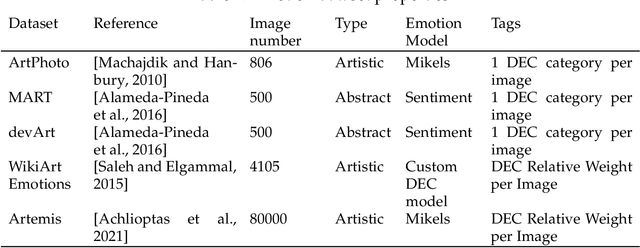
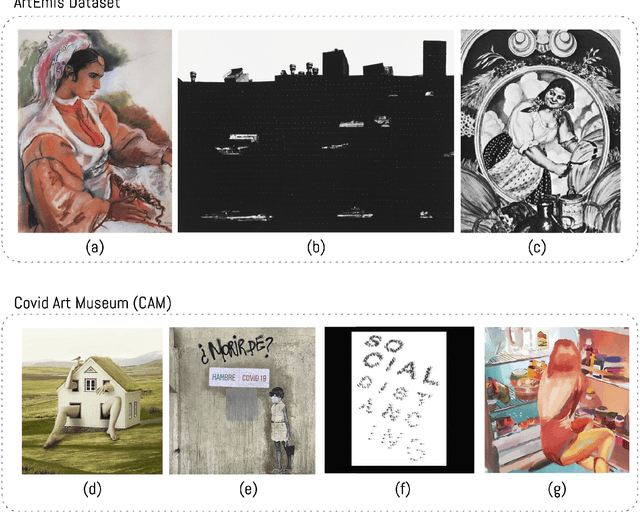
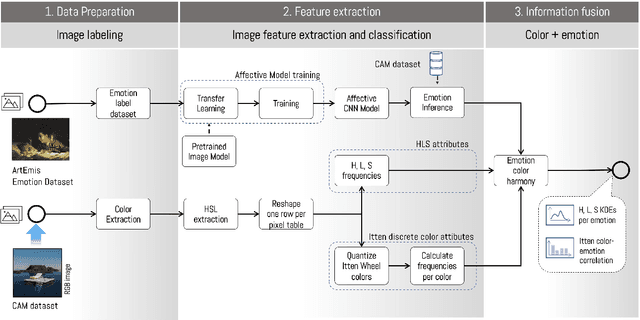
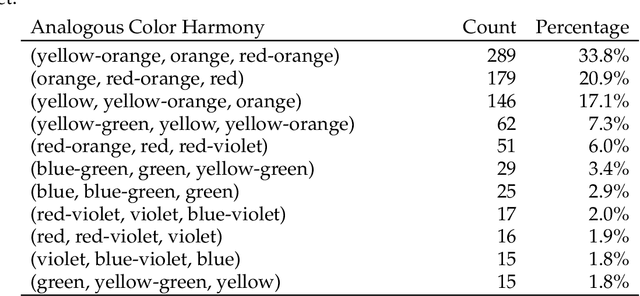
Abstract:Color is a complex communicative element that helps us understand and evaluate our environment. At the level of artistic creation, this component influences both the formal aspects of the composition and the symbolic weight, directly affecting the construction and transmission of the message that you want to communicate, creating a specific emotional reaction. During the COVID-19 pandemic, people generated countless images transmitting this event's subjective experiences. Using the repository of images created in the Instagram account CAM (The COVID Art Museum), we propose a methodology to understand the use of color and its emotional relationship in this context. The process considers two stages in parallel that are then combined. First, emotions are extracted and classified from the CAM dataset images through a convolutional neural network. Second, we extract the colors and their harmonies through a clustering process. Once both processes are completed, we combine the results generating an expanded discussion on the usage of color, harmonies, and emotion. The results indicate that warm colors are prevalent in the sample, with a preference for analog compositions over complementary ones. The relationship between emotions and these compositions shows a trend in positive emotions, reinforced by the results of the algorithm a priori and the emotional relationship analysis of the attributes of color (hue, chroma, and lighting).
Quantitative analysis of visual representation of sign elements in COVID-19 context
Dec 15, 2021
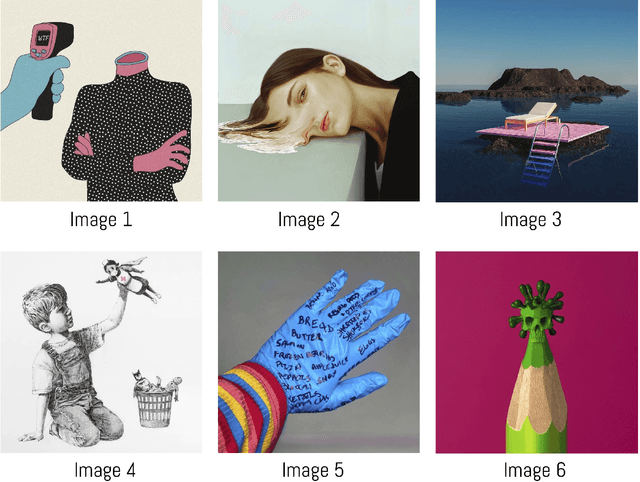

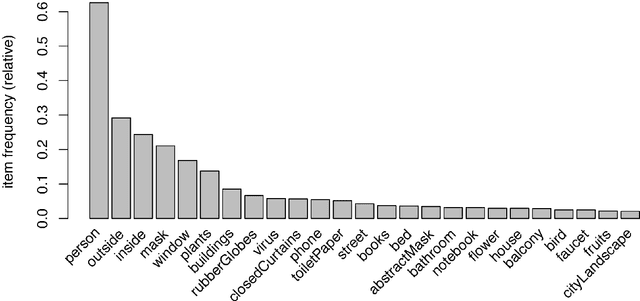
Abstract:Representation is the way in which human beings re-present the reality of what is happening, both externally and internally. Thus, visual representation as a means of communication uses elements to build a narrative, just as spoken and written language do. We propose using computer analysis to perform a quantitative analysis of the elements used in the visual creations that have been produced in reference to the epidemic, using the images compiled in The Covid Art Museum's Instagram account to analyze the different elements used to represent subjective experiences with regard to a global event. This process has been carried out with techniques based on machine learning to detect objects in the images so that the algorithm can be capable of learning and detecting the objects contained in each study image. This research reveals that the elements that are repeated in images to create narratives and the relations of association that are established in the sample, concluding that, despite the subjectivity that all creation entails, there are certain parameters of shared and reduced decisions when it comes to selecting objects to be included in visual representations
 Add to Chrome
Add to Chrome Add to Firefox
Add to Firefox Add to Edge
Add to Edge